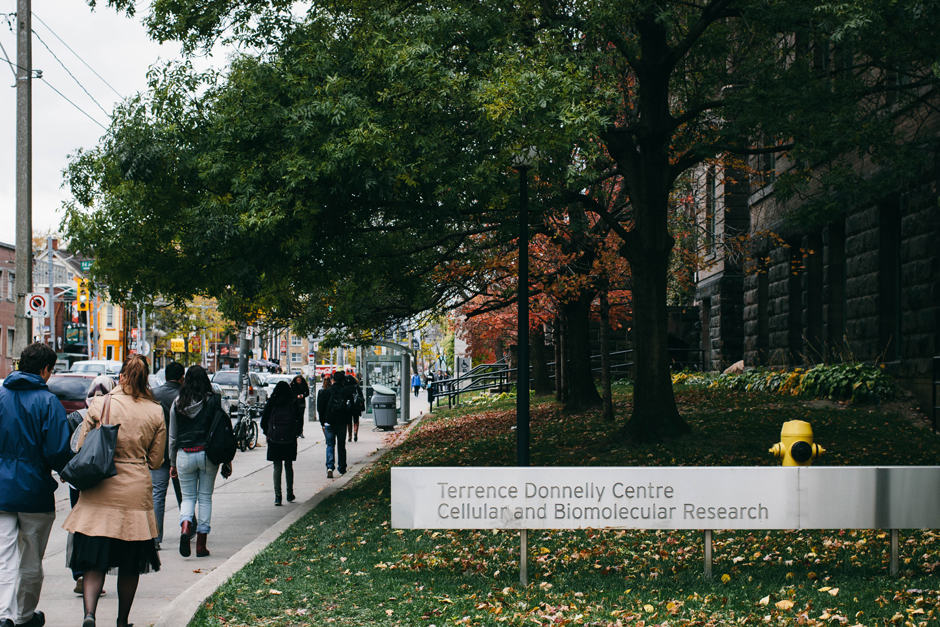This year, scientists finished unraveling and sequencing the human genome, a complex system of an estimated 19,000 genes.
In the context of this breakthrough, some members of the scientific community are concerned that government research grants will not provide adequate support to sustain these kinds of discoveries.
To harness more knowledge from the genome and develop the next generation of scientific breakthroughs — like treating patients based on their genetic makeup — more research is required into each specific gene.
According to George Fantus, associate dean, research at the University of Toronto’s Faculty of Medicine, learning more and researching each gene requires anywhere from three to five dedicated laboratories — a costly endeavor.
This month, Research Infosource, a research and development data sourcing organization, released its annual top 50 research income ranking for Canadian universities.
As expected, U of T maintained its number one position, drawing $1.1 billion in research income — nearly double the income of second-place University of British Columbia.
Peter Lewis, interim vice-president, research and innovation, said that “most research is awarded through competition, [as it’s] the optimal method of ensuring excellence.”
The university saw a seven per cent rise in research income this year — more than the average hike of 1.1 per cent, but less than its 13 per cent hike the previous year.
Much of this funding goes to the Faculty of Medicine. At its nine affiliate hospitals, including Mount Sinai, St. Michael’s, and Princess Margaret, the faculty has conducted more than $974 million in research.
Basic Versus Applied Research
The issue facing scientific researchers today is not how much funding, but for what purpose funds are being allocated. “[O]ur society is looking for ways to create immediate solutions to complex problems,” said Alison Buchan, vice-dean, research and international relations at the Faculty of Medicine.
In other words, Canada’s national research agenda is driven to create jobs by pumping funds into applied rather than basic research.
This is “a direct opposition to the trajectory of medical innovation,” said Buchan.
Basic research projects like human genome sequencing, which started in 1988, usually have longer timelines.
These projects, in turn, breed applied research — a key driver of growth, productivity, and jobs.
Fantus estimated that the currently available pipeline of basic research is available to streamline applied research for the next five to ten years. After that point, innovation could be severely curtailed.
Last year, government sources funded 69 per cent of universities’ research, with the lion’s share going to applied research.
“[W]hile the [focus on job creation] is fair and important, it should not be detrimental to basic research,” Fantus said.
CIHR alters application process
Moreover, the Canadian Institutes of Health Research (CIHR) is instituting a system-wide change to its method of funding via two programs, Project Scheme and Foundation Scheme.
Project Scheme targets short-term programs based on “great ideas,” while Foundation Scheme focuses on long term research projects.
The program splits applicants into junior and experienced researchers, receiving funding for up to five years and more than seven years, respectively.
The system attempts to simplify the process of applying for research funds by requiring applicants to submit only one application. While the intent is to reduce program complexity and improve quality, fairness, and transparency, it limits the researcher’s flexibility.
Buchan said the system change is “producing uncertainty and funding dislocation across Canada. This combination will, at the least, impact our ability to train the brightest and best students, and at the worst cause entire research areas to be abandoned due to funding loss.”
In response, CIHR media specialist David Coulombe emphasized that the new system is intended to relieve burden on researchers.
“Researchers volunteer their time to review applications and it would increase their workload significantly if the same (or similar) applications were being reviewed in more than one competition,” said Coulombe.
Operating costs stagnate
Once researchers win approvals, they must continue to seek funding to cover operating costs. Fantus said that new equipment supplied by the Canada Foundation of Innovation (CFI) was left idle until the university raised additional funds to hire the technicians to run the machines.
CFI has since changed its policy, incorporating 30 per cent of its funding towards operating costs, but last for five years only.
Conversely, funds for operating costs through CIHR have stagnated, curtailing the agency’s ability to attract the best scientists in the field.
Coulombe said operating costs are “eligible through the indirect costs program.”
Correction: An earlier version of this article misquoted Dr. George Fantus. The Varsity regrets the error.


